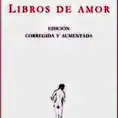The unknown Juan Ramón Jiménez: erotic poetry by the Andalusian Nobel Prize laureate
Jiménez is chiefly known for his children's book about the donkey, but he also wrote lewd and erotic verses relating to seducing Spanish and foreign women as well as nuns. A married American lady especially caught his attention
alekk m. saanders
Friday, 10 December 2021, 17:03
In December Stockholm traditionally hosts the Nobel Prize ceremony to honour its laureates. This year is marked by the 140th anniversary of the birth of Juan Ramón Jiménez, the Andalusian poet and writer who was awarded the Nobel Prize for Literature in 1956.
The award was in recognition of all his literary work, but especially of his book Platero y Yo (Platero and I), which depicts life in an Andalusian village through the life and death of a beloved donkey.
This book is studied and artially learned off by heart in all Spanish schools, and the Platero donkey is immortalised through the bronze sculpture by Jaime Fernández Pimentel in Malaga's Alameda Park.
However, Juan Ramón Jiménez also wrote verses suitable for adults only, depicting spicy moments from his adventurous and amorous life.

Jiménez also wrote verses suitable for adults only, depicting spicy moments from his amorous period as a womaniser
The French start
One of the best Spanish poets of the 20th century, Juan Ramón Jiménez was born in Moguer (Huelva province) on 23 December 1881. When he was 18, he finished his first two volumes of poetry, and at the age of 19, the young man began a life full of love affairs.
It is known that Juan Ramón fell in love with a young woman named Blanca Hernández Pinzón, who became his inspiring muse for many of his verses. Few know, however, that later he became a womaniser.
His amorous adventures started in 1901 in France where Juan Ramón was admitted for psychiatric treatment in a sanatorium in Bordeaux after the death of his father and the dire economic situation of his family. It is believed that while there he had several affairs, including a love story with his doctor's wife, who also features in the erotic poems.
When Juan Ramón returned to Madrid, he spent time in the Sanatorio del Rosario staffed by novitiate nuns.
It appears that during those two years he seduced at least three young nuns mentioned in some sources by name - Sister Amalia Murillo, Sister Filomena and Sister Pilar Ruberte. That apparent and unconfirmed story ended with the poet being expelled from the residence after the mother superior discovered the inappropriate activity.
It appears the young poet seduced at least three young nuns mentioned in some sources by name
All his love affairs with a long list of women provided enough material to inspire him to write 104 poems in 1911. Numerous romps with numerous females in numerous locations were depicted in his collection with the title Libros de Amor (2007 and 2013).
However, it is thought Juan Ramón refused to publish them during his own lifetime in order not to shock his future wife - Zenobia Camprubí. Some sources say the poet had actually sent the erotic poems to the printers in 1913 but withdrew them after Zenobia complained about a previous, much tamer, book of poetry.
The American love
Before getting married to Camprubí, Juan Ramón had fallen in love with a married American woman.
Louise Grimm lived in Madrid having married an important and wealthy Spaniard, Antonio Muriedas Manrique de Lara, who had financial interests in Mexico.
In the Spanish capital Grimm was known for her intelligence and admired for her beauty. This combination was rare and therefore creative personalities, including poets, easily fell in love with her. Her charms conquered the heart of the Andalusian poet, when he met her in Madrid in 1903.
Juan Ramón experienced love with a married American married woman who introduced him to English literature
Louise Grimm was a great lover of poetry and well-connected. She introduced Jiménez to many texts written in English, especially by authors of Romanticism, who were little known in Spain at the time.
Incidentally, in 1912, with the help of his friend A. J. Fraud, Jiménez translated Percy Bysshe Shelley's Hymn to Intellectual Beauty, published in 1915 in Spanish.
It appears that Juan Ramón Jiménez eventually read and studied writers such as William B. Yeats, William Blake, Percy Shelley and Emily Dickinson.
Juan Ramón and Louise apparently remained in contact by letter for some eight years, although some sources limit their relationship to between 1907 and 1912: ie. before he met his future wife.
The deeply loved wife
In 1913, Juan Ramón Jiménez met Zenobia Camprubí and fell deeply in love, although the courtship was not easy.
The couple eventually married in New York. His wife became not only Juan Ramón's great love and muse, but also his most faithful collaborator.
After the marriage Juan Ramón wrote Diario de un Poeta Recién Casado (Diary of a Newlywed Poet). It narrates the poet's journey by train and by ship, from Madrid to New York to be reunited with Zenobia and return to Spain.
His intimate diary was already full of symbolic poetry. The book signals the change from his sensitive to his intellectual period.
From that moment on, Juan Ramón Jiménez started writing very intellectual poetry, which would have a huge influence in the Generation of '27.
